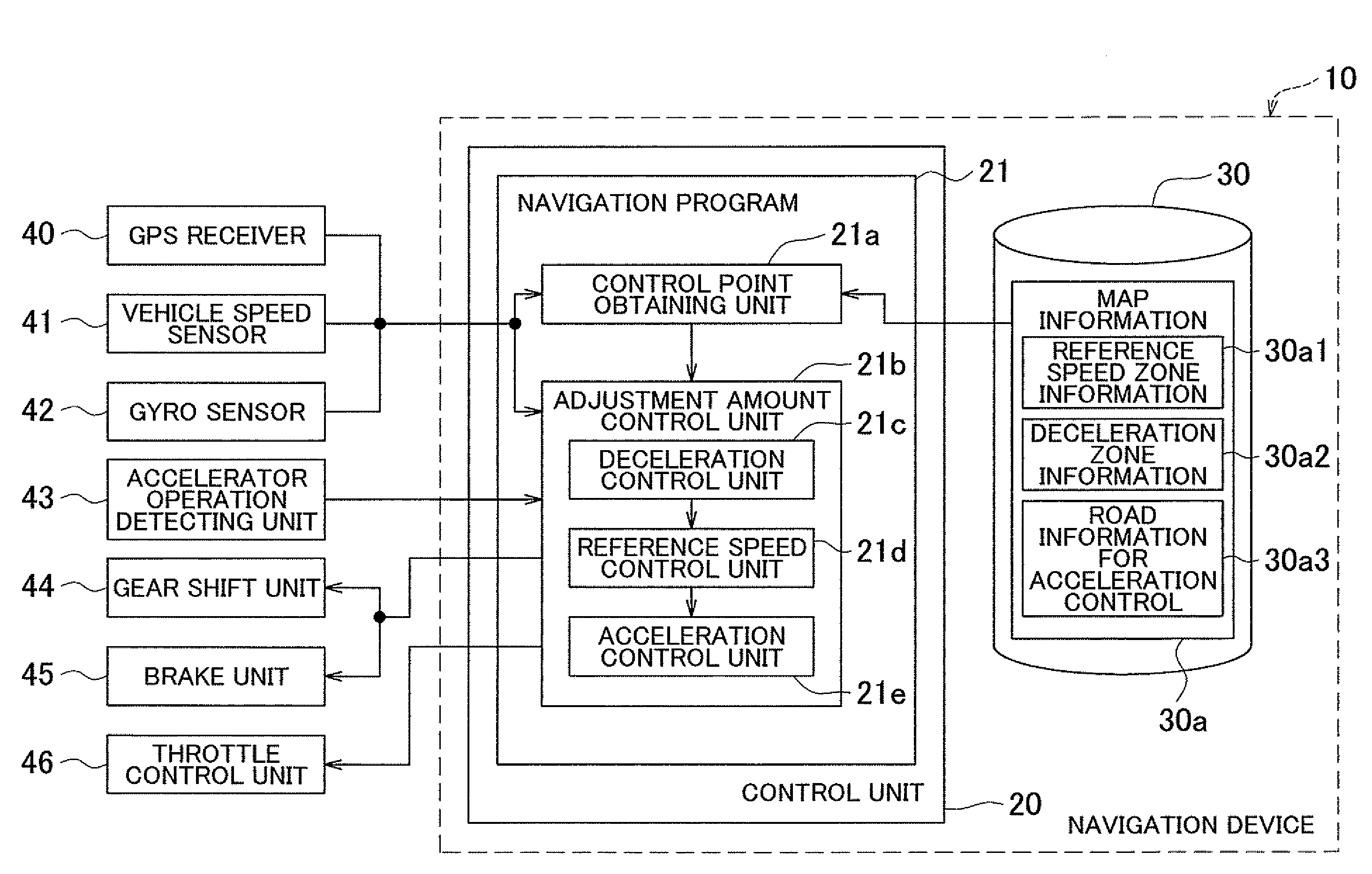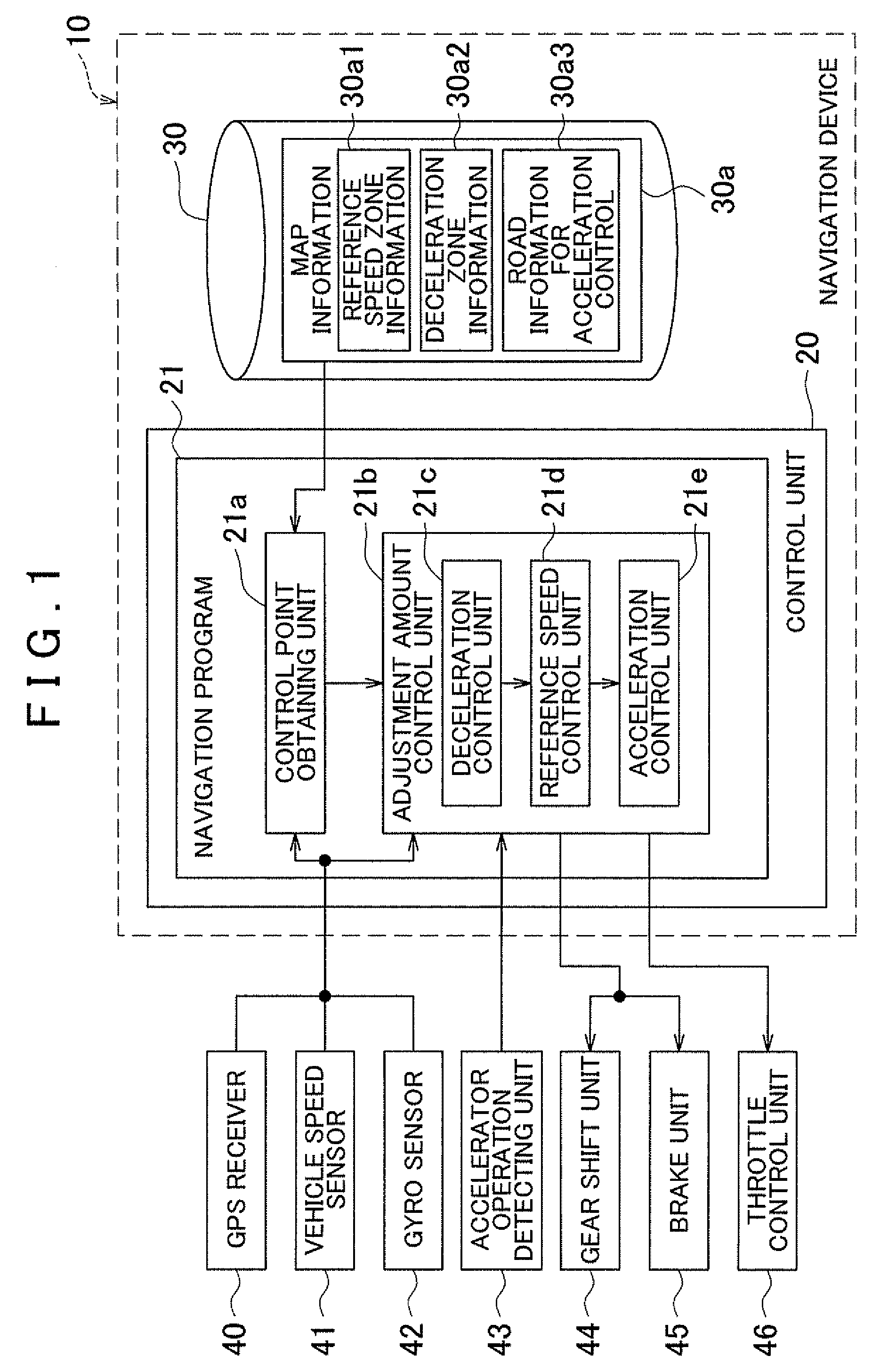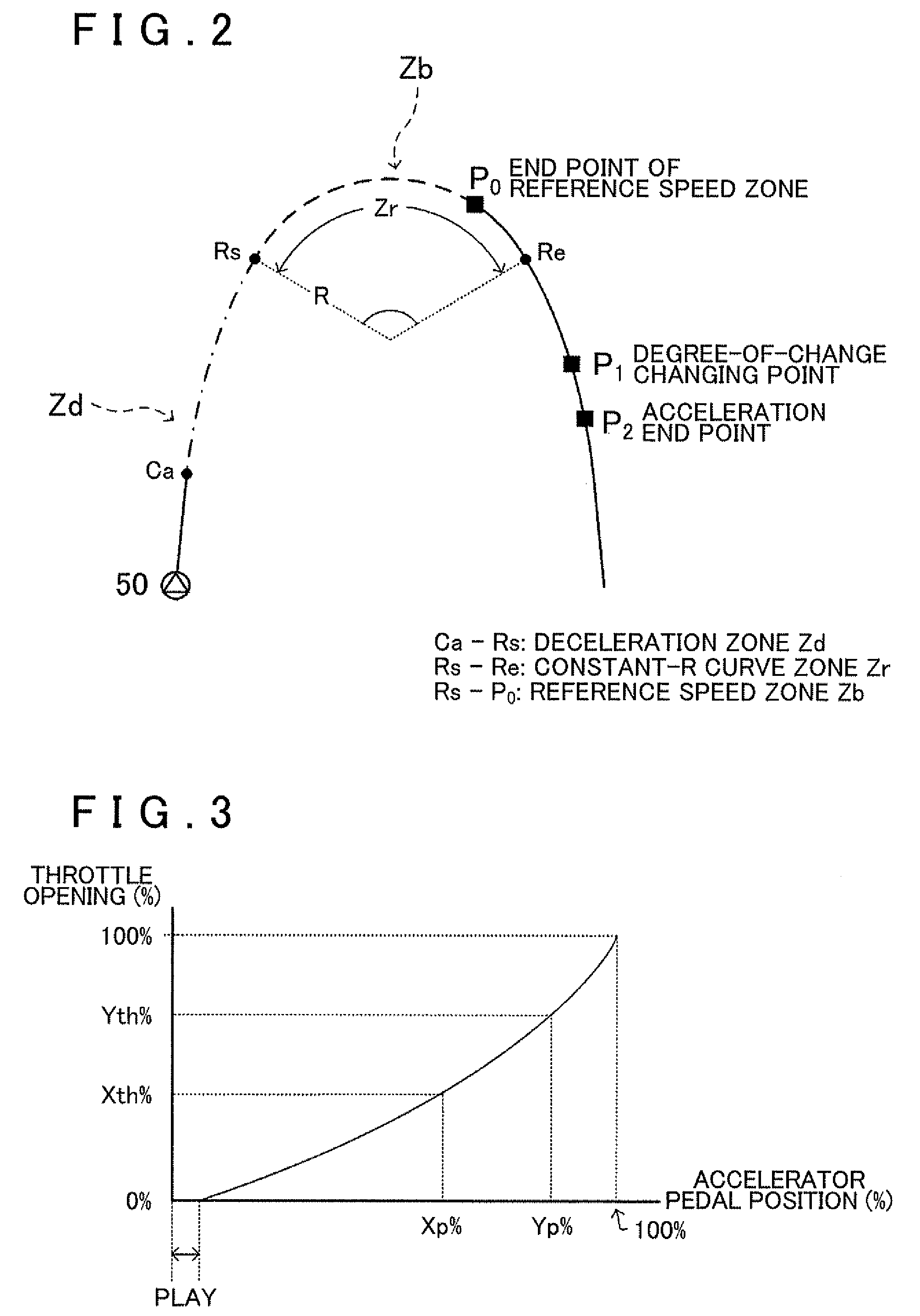Driving support device, driving support method, and driving support program
a technology of driving support and driver, applied in the direction of machine/engine, process and machine control, navigation instruments, etc., can solve the problems of vehicle behavior, incongruity, and inability to smoothly match the actual vehicle behavior, so as to reduce the sense of incongruity felt by the driver, the effect of lessening the sense of incongruity
- Summary
- Abstract
- Description
- Claims
- Application Information
AI Technical Summary
Benefits of technology
Problems solved by technology
Method used
Image
Examples
Embodiment Construction
[0031]Hereinafter, embodiments of the present invention will be described in the following order[0032](1) Navigation Device Structure[0033](2) Driving Support Processing[0034](2-1) Reference Speed Processing[0035](2-2) Initial Setting Processing[0036](2-3) Acceleration Control Processing[0037](3) Operation Example[0038](4) Other Embodiments
(1) Navigation Device Structure
[0039]FIG. 1 is a block diagram showing the structure of a navigation device 10 that includes a driving support device according to the present invention. The navigation device 10 includes a control unit 20 that has a CPU, a RAM, a ROM, and the like, and a memory medium 30. The navigation device 10 is capable of executing a program stored in the memory medium 30 and the ROM using the control unit 20. In the present embodiment, one such executable program is a navigation program 21, wherein the navigation program 21 has a function for performing driving support when traveling through a curve zone.
[0040]In order to rea...
PUM
 Login to View More
Login to View More Abstract
Description
Claims
Application Information
 Login to View More
Login to View More - R&D
- Intellectual Property
- Life Sciences
- Materials
- Tech Scout
- Unparalleled Data Quality
- Higher Quality Content
- 60% Fewer Hallucinations
Browse by: Latest US Patents, China's latest patents, Technical Efficacy Thesaurus, Application Domain, Technology Topic, Popular Technical Reports.
© 2025 PatSnap. All rights reserved.Legal|Privacy policy|Modern Slavery Act Transparency Statement|Sitemap|About US| Contact US: help@patsnap.com



